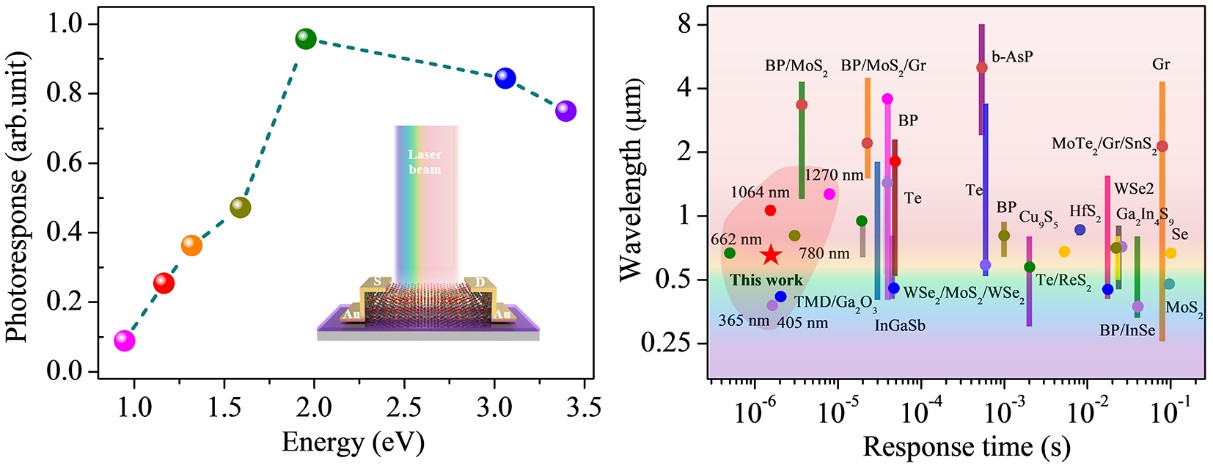Research
New 2D-Based Photodetector Developed with Fast and Broadband Photoresponse
| By
Recently, a collaborated team led by Prof. LI Liang and Prof. LI Guanghai at the Institute of Solid State Physics (ISSP), Hefei Institutes of Physical Science (HFIPS), Chinese Academy of Sciences (CAS), together with Prof. YAN Feng from Hong Kong Polytechnic University (PolyU) developed a new 2D-based photodetector, featuring on ultrafast photoresponse and broadband detection capabilities.
The photodetector, which was introduced in a paper recently published in ACS Nano, was made from layered ternary telluride InSiTe3.
Photodetectors with broadband detection capabilities play a crucial role in our daily lives and have been extensively used in a wide range of applications. Many 2D materials-based photodetectors exhibit high photoresponsivity and detectivity but slow response speed, which can be attributed to their prolonged excess carrier lifetime. Such slow speed performance has become a bottleneck for 2D materials-based photodetectors in practical applications, especially optical communication.
"We found the response of this InSiTe3-based photodetector stable and reversible." said Prof. LI Liang.
In their experiment, the photos responded within 545–576 ns, and the detection capabilities from the ultraviolet (UV) to the near-infrared (NIR) optical communication region ranged from 365–1310 nm.
The promising photodetector is based on ternary telluride InSiTe3 with trigonal symmetry and a layered structure. Scientists synthesized high-quality InSiTe3 crystals and determined its Raman vibration modes by Raman spectra measurements.
They found that the indirect band gap of InSiTe3 can be tuned from 1.30 eV (monolayer) to 0.78 eV (bulk). Moreover, the InSiTe3-based photodetectors exhibit the detectivity of 7.59 × 109 Jones.
These outstanding performance values highlight the potential of 2D InSiTe3-based photodetectors in high-speed broadband photodetection.
This research was partly supported by the Natural Science Foundation of China, the Recruitment Program for Leading Talent Team of Anhui Province, the Natural Science Foundation of Anhui Province, the Open Research Fund of Advanced Laser Technology Laboratory of Anhui Province, and the Hong Kong Polytechnic University.

Figure 1. (a) Photoresponse spectra curves at different wavelength irradiation. (b) Comparison of speed performance and spectral response with other reported 2DM-based photodetectors. (Image by LI Liang)

- Attachments Download:
-
contact
Prof. LI Liang
E-mail: liliang@issp.ac.cn


